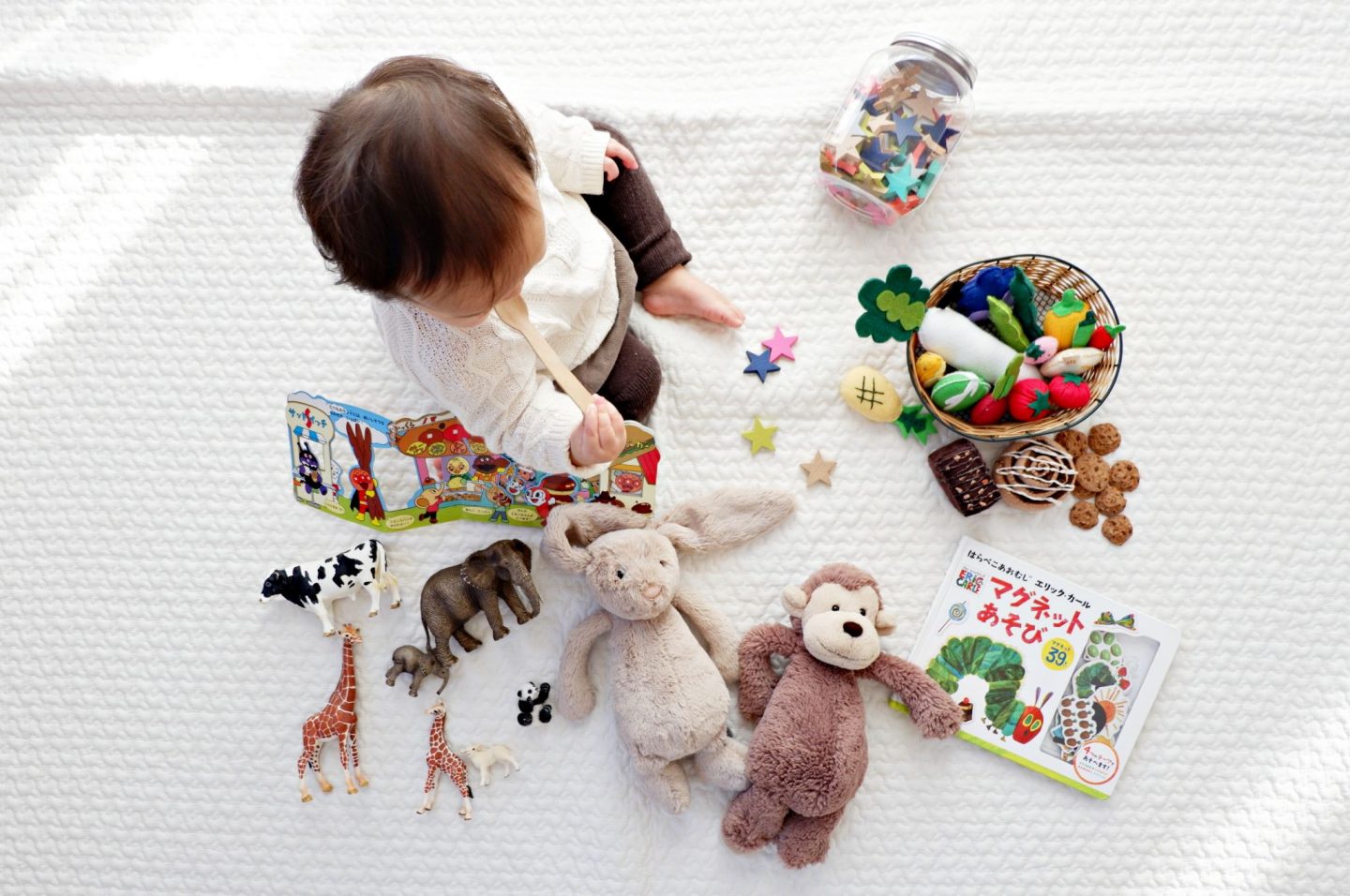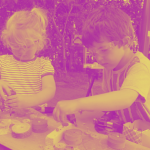Every December I wander through the children’s section of my local department store perusing the latest toys and gadgets. While I am not a mother myself, I get great joy from selecting and buying presents for the little humans in my life. The moment of anticipation when my carefully chosen gift is being unwrapped embodies the true festive feeling of wholesome, consumerist delight.
However, I want my gift to do more than just spark momentary joy in my little friend’s heart. I want them to play with it time again and again. I want it to inspire them and most of all, I want my gift to encourage creativity. But with so many choices out there, it can be difficult to know what to buy.

Creativity is defined in the Oxford Dictionary as any action ‘relating to or involving the use of the imagination or original ideas to create something new.’ With this in mind, not all children’s toys and play materials are created equal.
Friedrich Froebel, the famed creator of the kindergarten, recognised the important relationship between children’s play objects and learning in the pioneering design of his preschool curriculum in 1800s Germany. Blocks, balls, wooden cubes and clay all formed an integral part of children’s day-to-day activities– a pedagogical approach that he believed allowed children to engage in ‘the highest expression of human development.’
For example, Froebel would introduce a set of six rainbow-coloured balls to encourage children’s cognitive exploration of shape, number and texture. By directing attention onto play with the objects, children could create new abstract connections between themselves, other people and the world around them.
While children’s love of playing with physical materials still endures, kindergarten curriculum has changed significantly since its grass-root days. In place of Froebel’s play-based curriculum, standardized syllabus that is focused on teaching children numeracy and literacy through structured learning experiences has gained priority. A recent white report released by the Lego Foundation details this shift away from play-based learning in America over the past 15 years.
However, Froebel wasn’t alone in his beliefs on the relationship between children’s play objects and learning. Swiss psychologist, Jean Piaget was also fascinated by the subject and spent decades studying the phenomena throughout the 20th century.
Piaget hypothesised that as a child grew through iterative stages of biological development, their cognitive understandings simultaneously advanced, allowing for more complex manipulation of objects over time. By physically touching and handling objects, he concluded that children were able to develop a mental model of the world around them.
More recently, play materials have also had an important place in Reggio Emilia preschools where educators talk about the physical environment as a ‘third teacher’ in children’s learning. Teachers carefully select flexible classroom layouts, furniture and materials that children encourage children’s creativity and learning over time.
Tip #1: Seek out open-ended play materials
Many Reggio Emilia preschools have moved away from using traditional toys like train sets and diggers and in their place, offer open-ended materials such as paint, cardboard, clay and recycled plastic that encourage children to use their imagination and learning through their senses.
What makes these material ‘open-ended’ is their ability to encourage children’s experimental creative processes without restricting their play to a predetermined outcome. Unlike a toy truck, open-ended materials have the ability to be transformed and, in turn, have the ability to open up unique and dynamic learning processes in children.
Fine and gross motor skill development can also occur as a child plays with such materials. For example, as a two-year-old covers a large cardboard box in acrylic paint, they are developing their hand-eye coordination, learning how to use their fingers to hold different sized objects as well negotiating the navigation of slippery surfaces with their body.
This is not to say that the toy truck should be put in the rubbish but rather children should be given the opportunity to play with different types of materials, toys and objects that offer diverse educational experiences.
When buying kids Christmas gifts, try seeking out play materials that require children to engage in creative thinking. For example, Lego, Duplo and water play equipment or art materials including large rolls of paper, paints or a mini loom may help to do this. Open-ended play materials are not just restricted to physical objects but also computer games or apps like that focus on the creative process.
Tip #2: Choose gifts that allow children to use their senses
Maria Montessori, one of the most influential educators of the 20th century, described children as ‘sensorial explorers’ to articulate the criticality of smell, touch, taste, sight and sound in learning and development. This doesn’t just apply to babies and toddlers but children of all ages. As school curriculum across American becomes increasingly focused on educating children using words and numbers, children’s play with tangible materials allows them to experience the world in tactile ways.
For younger children, play materials such as sand, play dough, water trays or blocks may all be great options for encouraging children’s sensory-based creative learning. Or you could buy a child a spot in an art workshop or a trip to the theatre or a gallery. These activities allow children to have new creative experiences through physically participating in cultural events.
Tip #3: Think about creative projects instead of one-off activities
As creativity can be understood as a process and not solely as a one-off event, try thinking about projects that children can work on overtime. For example, you could set up a simple woodwork area outside where you and your supervised child could have a go at hammering, cutting and decorating a wooden sculpture. Or you could create marble runs out of cardboard tubes. If you don’t have a budget, you could even make it from things you find in the kitchen cupboard.
Tip #4: Pre-packaged kits can be a good option too
If putting together a creative project seems like a bit of a stretch, there are plenty of pre-packaged kits out there that can be a great alternative for a D.I.Y creative project. There is an abundance of building blocks, sewing, cooking, littleBits, robotics, electronics and craft kits available. The team at Makedo have created kits of plastic screws specifically for children to make creative cardboard constructions with. Depending on your child’s age and interests, there are plenty of options to choose from.
Tip #5: Give children the gift of your time
Perhaps the greatest present you can give a child is not a physical one but the gift of your time. By selecting a gift that you can do together, you can extend their creativity even further. For starters, you could introduce a new creative technique or demonstrate how to use an art tool to your child that then helps them to stay engaged in an activity for an extended period of time.
You could also try standing back and observing the child before intervening in their play. Questions such as, ‘how can I help you?’ or ‘can you tell me about what you are making’ may generate insights on their creative process and help to make an informed decision about the next steps in the activity could be.
The toys, objects and play materials that surround children can have a direct influence on their imagination and ability to use original ideas to create something new. The presents that we buy them say a lot about our individual values and what we place importance on in their lives.
This festive season, gift children the opportunity to be creative.
You may be very surprised at what they come up with!
This post has been cross-published on the Medium website.



